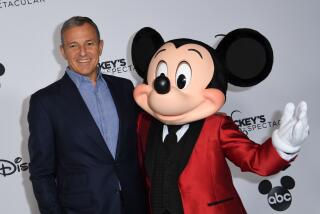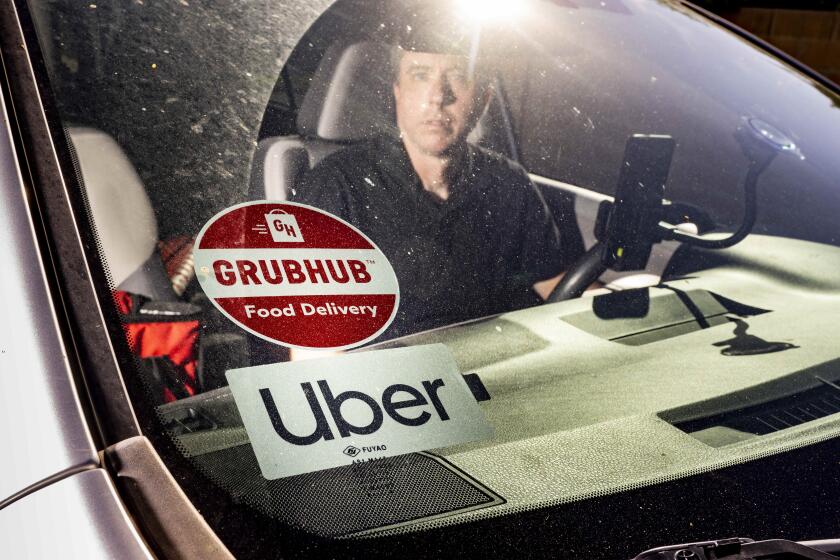Toy Price War Looms : Child World Pits Itself Against Toys R Us
- Share via
A toy price war that could bring good tidings to holiday shoppers is on the verge of erupting, after the nation’s second-largest toy retailer said it would beat its competitors’ advertised prices until Christmas.
But while buyers of everything from Barbie to Nintendo could be the big winners in this recession-plagued season of bargain buying, industry experts are fingering Child World itself as the big loser. The reason is that the expected toy war pits troubled Child World against Toys R Us, the industry leader.
“If this is not a war between Toys R Us and Child World, it’s at least a salvo,” said Bob Seligman, editor of Toy & Hobby World magazine. “Child World has been in trouble for a while; they’ve admitted that themselves.”
Seligman says Child World is trying to regain the customer base it has lost over the years. “Child World knows that it’s better to get the money before Christmas than after Christmas,” he said. “In the end, though, the big winner in all of this will be the customer.”
Child World has begun to drastically undercut all of its competitors’ advertised prices in newspapers and catalogues through the holiday season. The Avon, Mass.-based chain, prompted by long-term sales losses, said last week that it would cut 10% off its competitors’ advertised prices.
If Toys R Us, for example, were to advertise Sega’s new Super Nintendo entertainment system for $199.99, Child World would sell it for $180. Popular Teenage Mutant Ninja Turtles action figures, which list for $3.99 each at Toys R Us, would sell at Child World for $3.59 if they were advertised by the competition.
Ronald E. Tuchman, Child World president, said his company is trying attract the customers it has lost to competitors. He said both Child World and Toys R Us, the world’s largest toy retailer, can gain market share without hurting the other’s business by squeezing out retailers that do not specialize in toy sales.
“There is a soft underbelly of toy retailers out there that are not focused in the toy industry,” Tuchman said. “We can increase market share by aggressively pursuing customers we have lost over the years. We can get our customers back, maybe not today or tomorrow, but eventually.”
Last holiday season, Child World offered massive discounting to boost sales to cover its financial woes, pressuring Toys R Us and other toy retailers to cut their prices, which lowered profit margins for toy sellers.
This year, Child World is reacting to slow sales and profit margins eroded by intense price competition, said analysts, who are calling the move the start of a pre-holiday price war against Toys R Us.
Analysts said Child World’s undercutting is likely to mean better savings for holiday shoppers this year at both Child World and Toys R Us, which has a policy of matching its competitors’ advertised prices.
They said, however, that Child World’s attempt to attract customers from its competitors is a dicey move for the troubled company, because Toys R Us, which is suffering its own financial difficulties, is a more powerful toy retailer with a deeper financial reserve.
“This is a desperate move by a troubled company,” Terrence McEvoy, an analyst at Janney Montgomery Scott Inc., said of Child World. “I’m surprised that Child World would try to battle Toys R Us, because they know that Toys R Us is going to come back strongly and will be the winner. Toys R Us dominates the industry, and, if this turns out to be a real nasty price war, this will widen their lead.”
With 17.9% of the U.S. toy market, Toys R Us, in fact, has more than twice the market share held by its closest competitor, Wal-Mart Stores Inc., with 8.3%. K mart is No. 3, with a 7.7% market share. Although it is the second-biggest pure toy chain, Child World is only a distant No. 4 in market share, with 4.7% of the U.S. toy market.
Price undercutting plans at Child World come only two weeks after Toys R Us released its first catalogue with $173 in coupons, in an advertising campaign that it distributes at the company’s 461 U.S. stores.
Child World and Children’s Palace stores, both owned by Child World Inc., have 153 stores across the country, primarily on the East Coast, and they are undercutting competitors’ prices to prevent further losses, analysts said.
The company underwent a “retrenchment” period this year and closed about 30 stores nationally, including its only California store in Torrance this summer. Its aggressive advertising campaign this holiday season to attract money-conscious consumers is an attempt at “coming back from the dead,” said a company spokesman.
Child World had a loss of $22.9 million on sales of $82.8 million for the first quarter of 1992, ended May 4. The company’s 1991 fiscal year, which ended Feb. 2, resulted in a loss of $192.3 million on sales of $829.4 million, after restructuring costs of $134 million.
Child World shares no longer trade on the stock market, after NASDAQ delisted the company this summer, citing difficulties at the firm.
Although analysts predict that Toys R Us will come out of any toy war relatively unscathed, the toy giant’s stock took a beating last week after Child World lobbed its retail missile. Last Tuesday, the company’s stock slipped $3.25 to close at $29.75 on the New York Stock Exchange.
In reaction, Bear, Stearns & Co. took Toys R Us off its recommended list, citing growing profit-margin pressure and expectations of tough price competition. Montgomery Securities analyst John Weiss in San Francisco cut his third-quarter earnings estimate for Toys R Us to 11 cents a share from 15 cents, while Paine Webber analyst Margo McGlade in New York cut her rating on the stock to “hold” from “attractive.”
On Monday, Toys R Us shares closed at $29.375, up 62.5 cents
Holiday Toy Wars As the holiday season approaches, a price war is heating up in the fragmented retail toy market. Child World, the second-largest toy chain in the U.S. has said it will beat its competitor’s advertised prices, forcing battle lines to be drawn. A look at the estimated market share of the U.S. toy industry in 1990: Toys R Us: 17.9% Wal-Mart: 8.3% K mart: 7.7% Child World: 4.7% Kay-Bee / Circus World: 4.5% Target: 4.5% Sears: 2.5% Others*: 49.9% *Includes smaller toy stores, department stores as J.C. Penney and discounters. Source: The Toy Market Index
More to Read
Inside the business of entertainment
The Wide Shot brings you news, analysis and insights on everything from streaming wars to production — and what it all means for the future.
You may occasionally receive promotional content from the Los Angeles Times.










